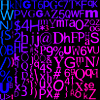Hi again,
I'm working on a system for applying explosion force to the exposed surface area of target using 2D visibility polygon techniques. The result is that I get visibility triangles that look like this (see orange/red triangles):

Just looking for ideas on how to determine how much force to apply based on these triangles, and more importantly, at what point?
I know the area of the triangle, the length of the sides, the height of the triangle, etc. How much force should I be applying? Probably some percentage of the explosion circle's full arc, modulated somehow by impact distance. Should I apply force at the vertices? At the midpoint of the surface face? I'd love a continuous way to apply force based on the shape's COM, mass, and inertia from the surface area, if you know one.
Any ideas?
Thanks!








